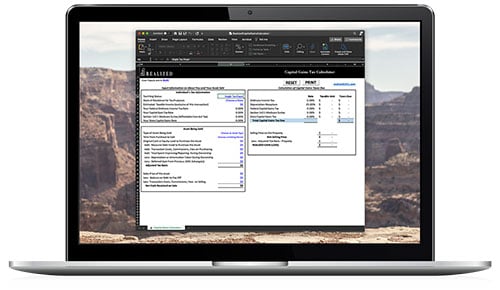
When an investor experiences a capital loss, they net it against capital gains. If the net transaction is still a loss, the investor may be able to use the loss toward future years.
But of course, the IRS generally imposes restrictions on something that seems too good to be true, and capital losses are no different. It’s important to understand the conditions of how a capital loss carry forward works and for how long.
Netting Capital Gains and Losses
Investors can claim a total capital loss of $3,000 per year. $3,000 may not sound like much if you have a big loss, say $20,000. But even in that case, investors can still utilize the remaining $17,000 loss, just not in the current year.
But first, how does a net capital loss work? It’s easier to explain with an example.
An investor sells stock for a realized gain of $10,000. They then sell a capital asset for a loss of $13,000. The net of these two capital transactions is a $3,000 loss. The investor can offset ordinary income with the $3,000 capital loss.
Another investor does something similar by selling stock for a realized gain of $10,000. They then sell a capital asset for a loss of $20,000. The net of these two capital transactions is a $10,000 capital loss.
This investor can offset $3,000 of ordinary income in the current year. The remaining $7,000 loss is carried forward to be used in future years. The same $3,000 limitation will apply for each year.
Limitations to Capital Loss Carry Forward?
Sticking with the above example, our investor has $7,000 to use in future years. Assuming no other capital losses in those years, the use of this loss would look like this:
2024: $3,000
2025: $3,000
2026: $1,000
What if the investor had a much larger loss, $30,000? At $3,000 per year, that would go on for ten years. But is that possible? Does the IRS allow carrying a loss for that many years?
The answer is yes because there is no time limit on carrying forward a capital loss.
What if the loss is $200,000? It would take over 66 years to use up that loss and will outlive the investor.
The investor can keep carrying forward the loss as long as they are alive. Once they die, the loss is gone, and the carry forward ends. The investor’s estate or heirs can’t use it.
Calculating a capital loss that carries forward can be complex. The loss must first be offset with any capital gains. Only then can a potential carry-forward loss be considered. A tax specialist can help determine your correct capital loss carry forward amount.
This material is for general information and educational purposes only. Information is based on data gathered from what we believe are reliable sources. It is not guaranteed as to accuracy, does not purport to be complete and is not intended to be used as a primary basis for investment decisions. It should also not be construed as advice meeting the particular investment needs of any investor.
Realized does not provide tax or legal advice. This material is not a substitute for seeking the advice of a qualified professional for your individual situation.
Hypothetical examples shown are for illustrative purposes only.


